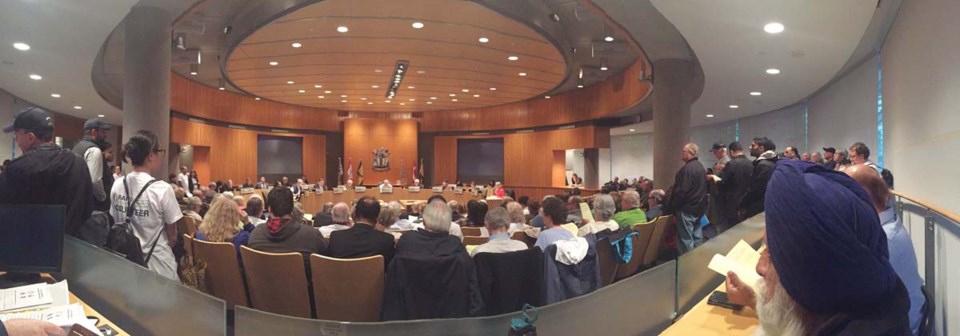Dear Editor,
Re: “Farmhouse saga ends with ‘compromise,’” News, May 19.
My husband and I attended the recent Monday and Wednesday public hearings on house size restrictions on ALR land.
I now question the rationality of a decision to spend more than six hours of our time when the outcome was entirely predictable. But hope springs eternal.
Most frustrating was that “compromise” was the justification for the mayor and majority of council members to support near 11,000-square-foot homes on half an acre or larger parcels of land. The point of reference for our municipal council was the 23,000-square-foot homes that have, over the last several years, changed the landscape of ALR land into mega mansion estates that have very little to do with farming.
The erosion of our farmland to speculation and wealth generation has galvanized public action in support of this vital resource and that was clearly evident at the public hearings.
Preservation of our farmland for farming and future generations of farmers was the clear message expressed in the many passionate, eloquent and well-researched presentations.
The Association of Farmland Lessees, the Richmond Food Security Society and the Ministry of Agriculture guidelines are the benchmarks of what is important when it comes to agricultural land. Some seem to have lost sight of that, wooed by big money and a clash of values.
Eating local, eating healthy and having a sustainable food source is of importance to all of us. I would suggest that farmers advocating for 11,000-square-foot homes are as equally interested in speculation as in preservation.
Another word that came up multiple times by the final speaker of the evening was “viability” of farmland. It seems that viability of our farmland is attached to growing houses as well as growing food and exponentially growing land value thus guaranteeing unaffordability for the majority of future farmers.
I thank the councillors who recognize the value and purpose of our agricultural land and who have unsuccessfully supported the reasonable and generous size of 5,382-square-foot homes on our ALR land.
N. McDonald
Richmond



